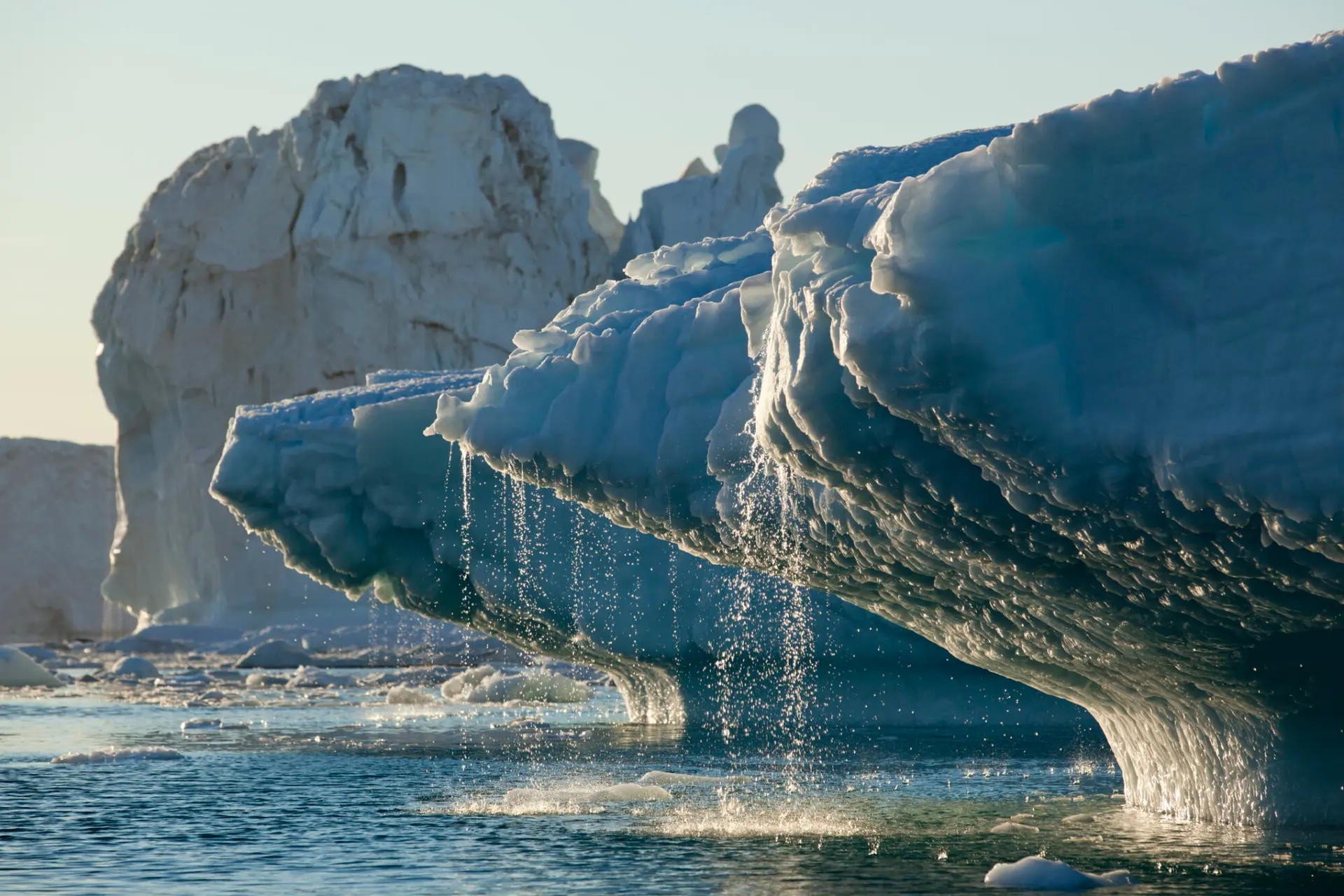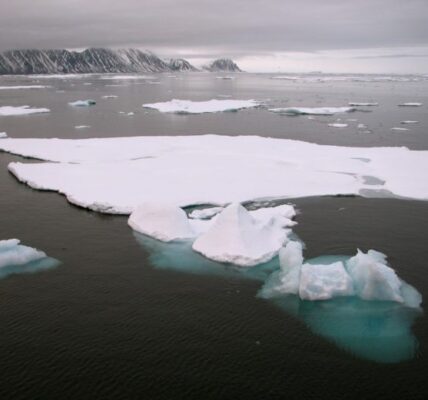The Arctic Ocean is one of the most extraordinary, unique and severely threatened regions in the global biosphere. The marine ecosystem supports more than 7,000 identified species, many of which are found nowhere else on Earth — polar bears, walrus, several kinds of ice seals, narwhals, beluga whales, bowhead whales and many kinds of seabirds, fish and invertebrates. Indigenous peoples have survived off this rich ocean ecosystem for millennia.
However, the Arctic Ocean is now suffering effects of climate change more severely than anywhere else on Earth, and is well on its way toward ecological collapse. Arctic sea ice has declined by roughly half in the past 50 years, permafrost and the Greenland ice cap are rapidly melting, ocean acidification is increasing, currents are changing, sea ice ecosystems are in catastrophic decline, and many coastal villages are moving to higher ground.
But rather than intensifying efforts to protect this struggling ocean region, governments and industry are instead rushing to exploit the increasingly ice-free Arctic Ocean for oil and gas, minerals, shipping, commercial fishing, tourism and military interests. The U.S. Geological Survey estimates that the Arctic may contain 30% of the world’s undiscovered oil and 13% of gas deposits, most of it offshore. The Arctic seabed may also contain strategic minerals; some nations, particularly Russia, are expanding their military presence across the Arctic Ocean; the commercial fishing industry is eyeing potential expansion into the region; and increasing commercial ship traffic across ice-free waters increases risks of oil spills, ship strikes on marine mammals, underwater noise and regional air pollution.
Combined with the effects of climate change, such industrialization and militarization will further accelerate ecological and social collapse of the region. So, instead of imposing the same industrial model on the Arctic Ocean that has tragically failed the rest of the world, we need a new protective approach to this unique region, and soon.
However, the Biden administration just announced that the U.S. is now joining other Arctic nations in the Arctic offshore resource rush, claiming rights to vast extended continental shelf areas of the Arctic Ocean seabed beyond our 200-mile limit. This is a historic mistake.
Instead, the U.S. and other Arctic coastal nations — Canada, Russia, Norway, Denmark/Greenland — should permanently and fully protect all waters of the Arctic Ocean outside their 12-mile territorial sea, and all nations should permanently and fully protect international waters of the Central Arctic Ocean, collectively in a circumpolar International Arctic Marine Sanctuary, setting aside all territorial claims, including extended continental shelf claims.
The 1982 United Nations Convention on the Law of the Sea, or UNCLOS, allows coastal nations to claim sovereign rights to waters out to 200 miles from their shoreline as an Exclusive Economic Zone, aka EEZ, as well as to claim extended continental shelf, or ECS, areas of the seabed beyond their 200-mile limit if they can demonstrate that these extraterritorial seabed areas are geological extensions of the shelf within their EEZ. Other Arctic coastal nations, as parties to UNCLOS, have made such extended shelf claims, some of which overlap near the North Pole.
Although the U.S. is not yet a party to UNCLOS, it just joined the fray by claiming more than 380,000 square miles of seabed — twice the size of California — outside of our 200-mile EEZ, mainly in the Arctic Ocean and Bering Sea off Alaska. The rush to claim extended continental shelf seabed areas across the Arctic is eerily reminiscent of the 19th century land rush in the western U.S., then said to be our “manifest destiny.”
For the Arctic Ocean today, world governments should take a time-out, and refocus the approach to this extraordinary, threatened global treasure.
In 1959, nations joined together to agree to the Antarctic Treaty, permanently setting the continent aside exclusively for peaceful, scientific purposes, holding all previous territorial claims in abeyance. The Antarctic Treaty has been a truly historic success, and a model of international cooperation for conservation.
To refocus our approach toward the Arctic Ocean, we proposed at the 2022 U.N. Oceans Conference in Lisbon Portugal, that Arctic and other governments agree to establish a permanent, circumpolar International Arctic Marine Sanctuary for all waters and seabed outside of the 12-mile territorial sea of Arctic coastal nations. This would include international waters of the Central Arctic Ocean surrounding the North Pole, as well as productive waters across most of the Arctic continental shelf within coastal EEZs.
The proposed Arctic Marine Sanctuary should be co-managed with Indigenous communities along the Arctic coast, and should permanently preserve the Arctic Ocean for peaceful, scientific purposes, prohibiting all oil and gas development, mineral development, commercial fishing and military activities. The Sanctuary should also have more stringent safety rules for Arctic shipping and tourism, expanded scientific research, and it should protect subsistence uses by coastal people. Such comprehensive protection will give the Arctic Ocean ecosystem and coastal peoples the best chance possible to survive the devastating effects of climate change over the remainder of this century.
Of course, under Vladimir Putin, Russia is unlikely to agree to such a multilateral conservation treaty at present. But Russia will not always be led by such an imperial, authoritarian regime and is expected to someday rejoin the international community, and hopefully will endorse the global effort to protect the Arctic Ocean.
The first step on this path is for President Joe Biden to designate by executive order the proposed U.S. Arctic Marine National Monument, permanently protecting all U.S. waters of the northern Bering Sea and Arctic Ocean off Alaska from oil and gas development, seabed mining and commercial fishing. In so doing, President Biden will insulate this unique marine system from threats in future federal administrations, and he will lead the way for other Arctic nations to join together to establish the proposed circumpolar International Arctic Marine Sanctuary. Despite President Biden’s commitment to protect 30% of America’s oceans, he has yet to permanently protect, e.g. as marine monument or marine sanctuary, any of Alaska’s vast, spectacular and threatened offshore ecosystems. It is time he did so.
Society has a historic choice to make with the imperiled Arctic Ocean. Should we continue our industrial expansion into one of the last wild areas of the world, further degrading the environment? Or should we choose to protect and sustain this magnificent place? How we answer this question will tell us a lot about ourselves and our future.
In 2024, let’s hope that Arctic nations and the global community will finally join together to permanently protect this spectacular and threatened ocean region for all time.
Rick Steiner is a marine conservation biologist in Anchorage, and was a marine conservation professor with the University of Alaska, first stationed in the Arctic. He proposed the International Arctic Marine Sanctuary at the 2022 U.N. Oceans Conference.
The views expressed here are the writer’s and are not necessarily endorsed by the Anchorage Daily News, which welcomes a broad range of viewpoints. To submit a piece for consideration, email commentary(at)adn.com. Send submissions shorter than 200 words to letters@adn.com or click here to submit via any web browser. Read our full guidelines for letters and commentaries here.





Magnificent beat I would like to apprentice while you amend your site how can i subscribe for a blog web site The account helped me a acceptable deal I had been a little bit acquainted of this your broadcast offered bright clear idea
Your point of view caught my eye and was very interesting. Thanks. I have a question for you.